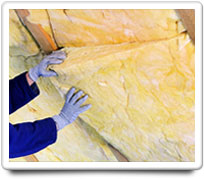Question Topic
Attic Water Vapor In Attic

POLICY-Wizard™ calculates your ideal home care program to avoid problems with your Attic, but sometimes trouble can still occur. Here are answers to questions about attic water vapor in attic.
QUESTION FROM M. Hart
I found cracking paint high on an outside wall and a bubble on the ceiling right above. When I looked in the attic, I could see frost on the underside of the roof at that point and several others and found another ceiling bubble in another room. The roof is snow-free right now, but was this an ice dam issue? Do I need to have a roofer look at it? I have been thinking about increasing the insulation in the attic. Will this help?
Thanks for your time.
ANSWER FROM POLICY-Wizard™
Dear M. Hart:
A couple of questions:
When you say you saw cracking and bubbling on your ceilings, did you also see any evidence of staining from water?
Did you see large formations of icicles on edges of the sections of your roof near where you saw the problems with you ceilings?
And lastly, what sort of vents do you have for your roof / attic? Are they located in your soffits, roof edges, or gables?
Home-Wizard.com
FOLLOW-UP FROM M. Hart
Please see below for my responses to your questions:
When you say you saw cracking and bubbling on your ceilings, did you also see any evidence of staining from water? Response: Around one of them, yes. The other hasn't cracked yet.
Did you see large formations of icicles on edges of the sections of your roof near where you saw the problems with you ceilings? Response: No.
And lastly, what sort of vents do you have for your roof / attic? Are they located in your soffits, roof edges, or gables? Response: Two near the ridge, only one one side, just below the gutter. As a matter of fact, that's about the only place I see icicles.
General info: small house, basement and slightly raised 1st floor, ~25 x 50 ft.
Thanks for your prompt response!
ANSWER FROM POLICY-Wizard™
Dear M. Hart:
From your description, it does not sound like a case of ice damming. But rather the frost you are seeing in the attic is likely due to water vapor from your house getting up into the attic and then during the winter this water vapor is condensing on the cold roof surfaces and then freezing. Then when the weather warms up, the frost thaws, and you have water dripping back into your house (which is likely causing the bubbling and paint cracking that you are seeing in your ceilings and upper walls). The source of the water vapor getting up into your attic must be found and stopped, otherwise you could be looking at significant problems with wood rot and mold formation.
There are two aspects to solving this problem: 1) closing off the so-called “attic bypasses”, that is, openings from your house to the attic where warm moist air can get up into your attic; and 2) reducing the high moisture levels in your home.
Regarding closing off “attic bypasses”, water vapor naturally wants to move upward and into the attic. You should inspect your attic floor and seal up any air leaks. And even if you have to pry up a few floorboards to do it, check around light fixtures and other penetrations in the ceiling. Use expanding polyurethane foam or other weatherproofing supplies to seal gaps. Also, you should inspect any ductwork that is running through your attic, and make sure it is adequately insulated, and there is no air leaking in from any of this ductwork. And if your house has been “balloon framed”, meaning that wall studs run all the way from foundation to roof eave, you may want to add blocking in stud bays to keep these cavities from being a channel for damp air to travel from your foundation up into your attic.
Regarding reducing high moisture levels in your home, example causes of high moisture levels in your home can include:
- Damp basements.
- Malfunctioning (or lack of) exhaust fans in the bathroom and kitchen for venting moisture to the outside of your home.
- Unvented gas or kerosene heating devices.
- Dryer vents that are not ducted to the outside of your home
Once you get all that warm, moist air out of your attic, the frost (and resulting condensation) should disappear.
Just an additional note: adding more attic ventilation is not the right solution. Additional roof vents allow more air to escape from the attic and that pulls more warm moist air from the house into the attic. However, having adequate insulation in the attic floor can help.
Hope this is helpful.
Home-Wizard.com
FOLLOW-UP FROM M. Hart
Thank you so much. This was very informative and specific and should be very helpful. I will print this out and create a checklist to follow up on.
ANSWER FROM POLICY-Wizard™
Dear M. Hart:
. . . thanks for the feedback.
Glad that we were able to be of assistance to you.
Regards,
Home-Wizard.com

 Overview
Overview Routine Care
Routine Care Q & A
Q & A Articles
Articles